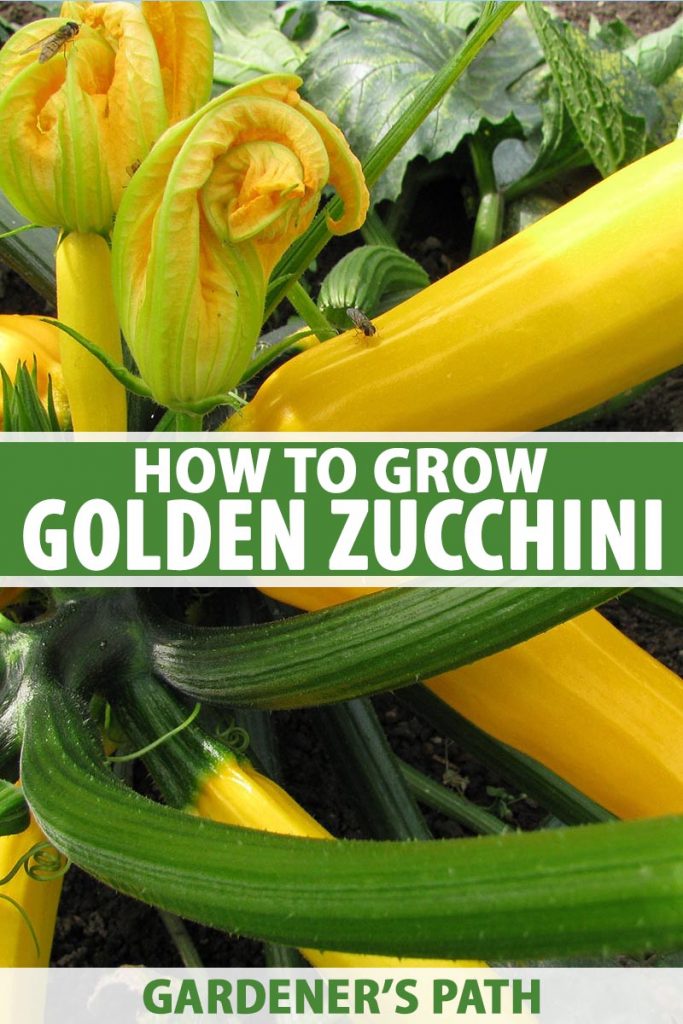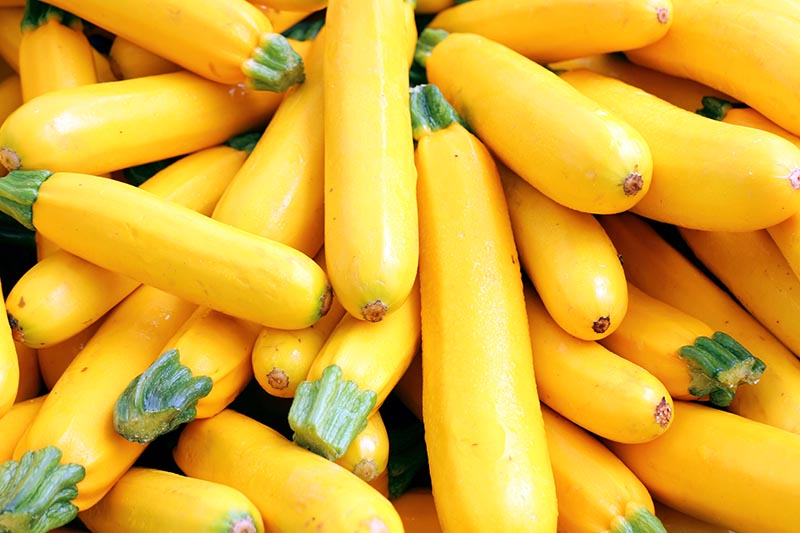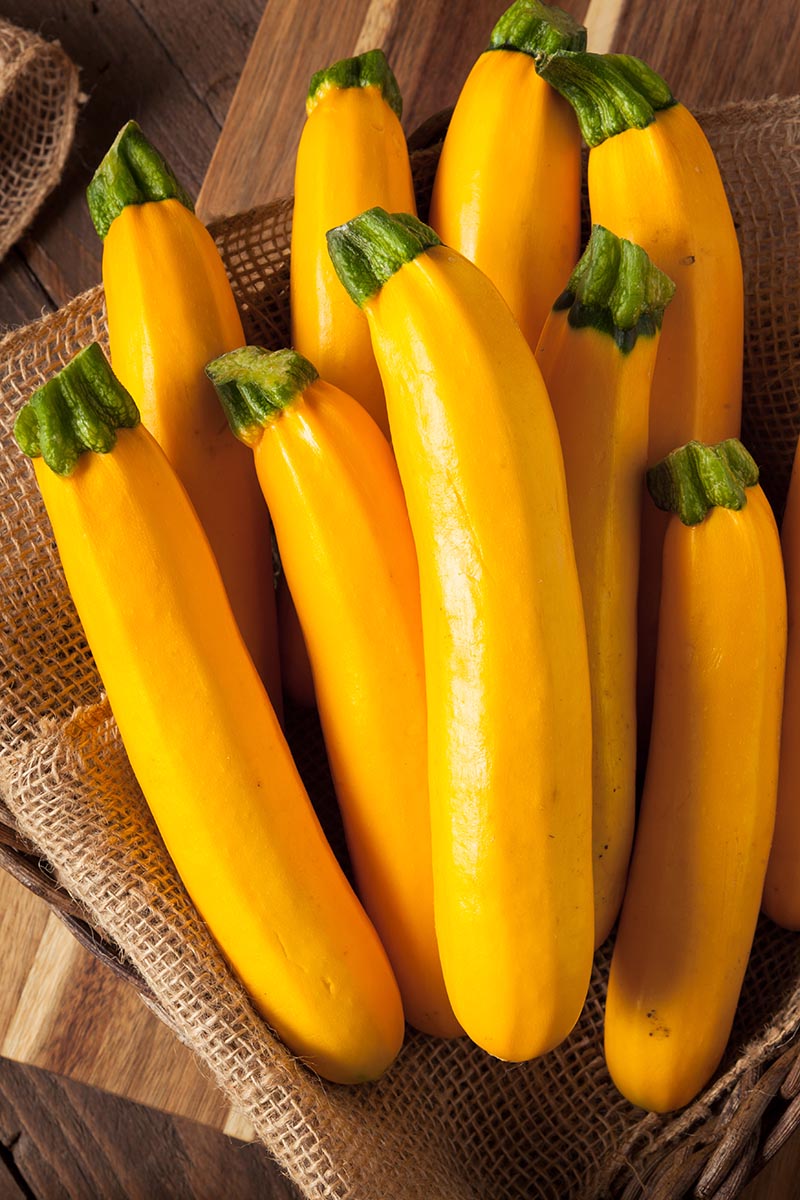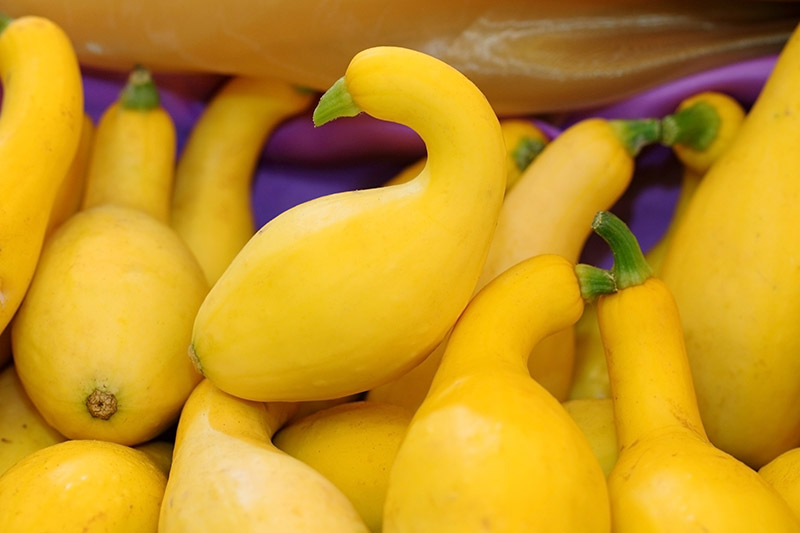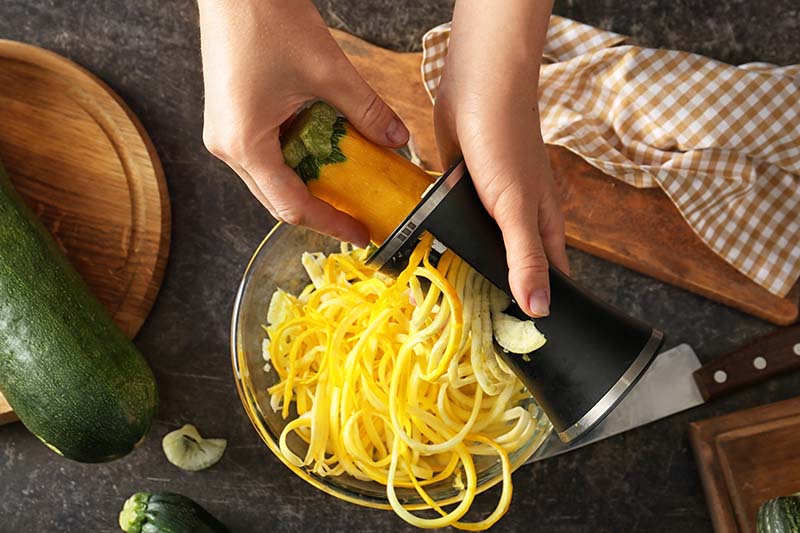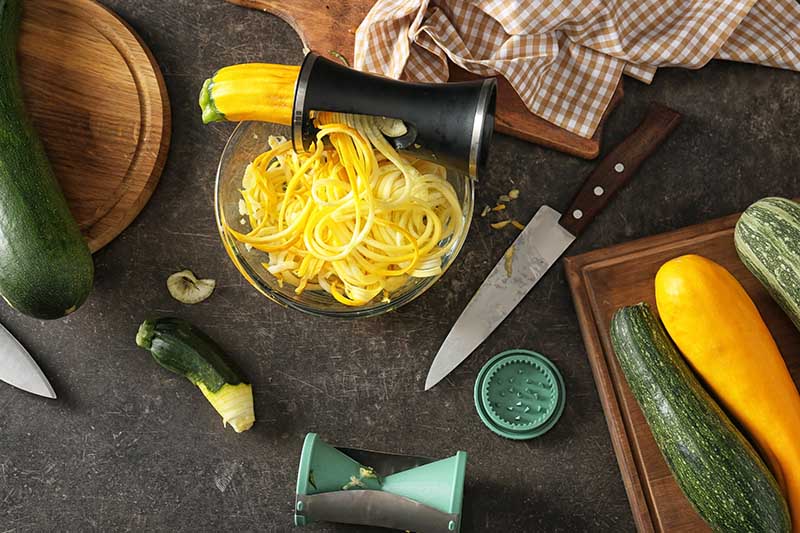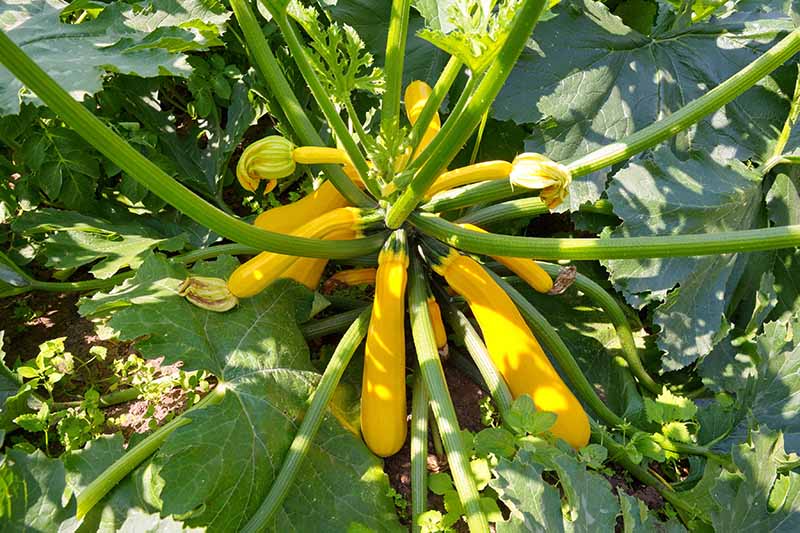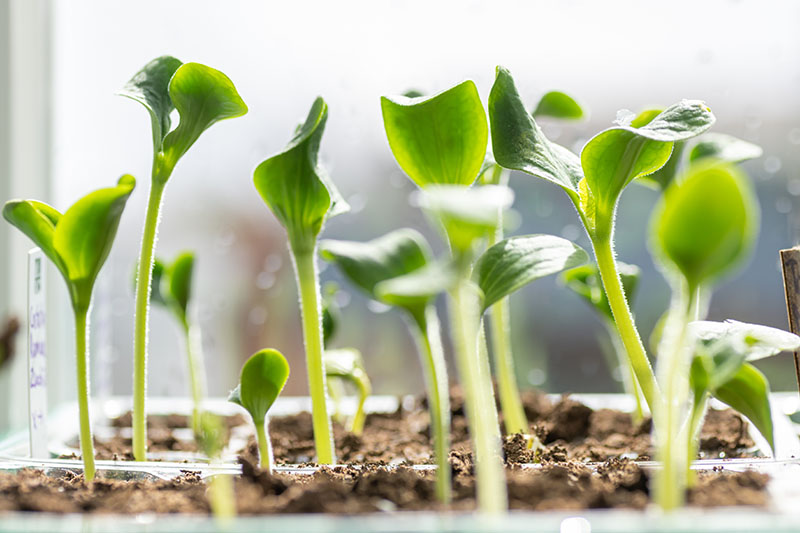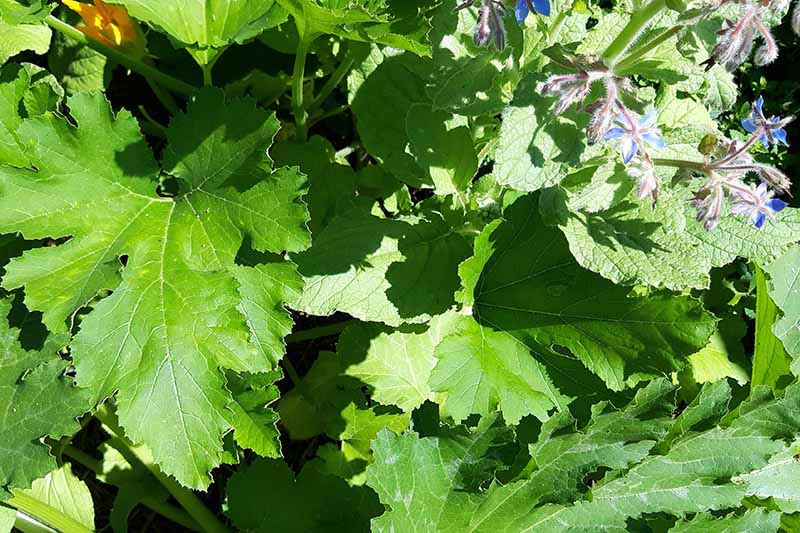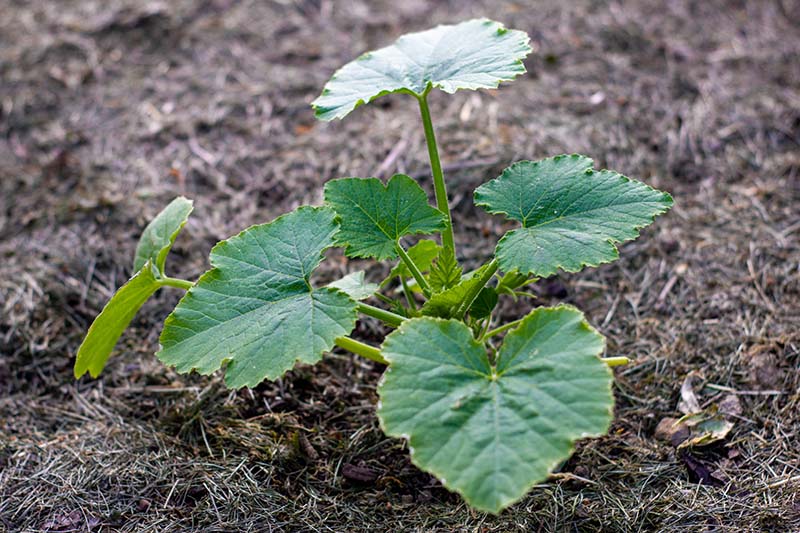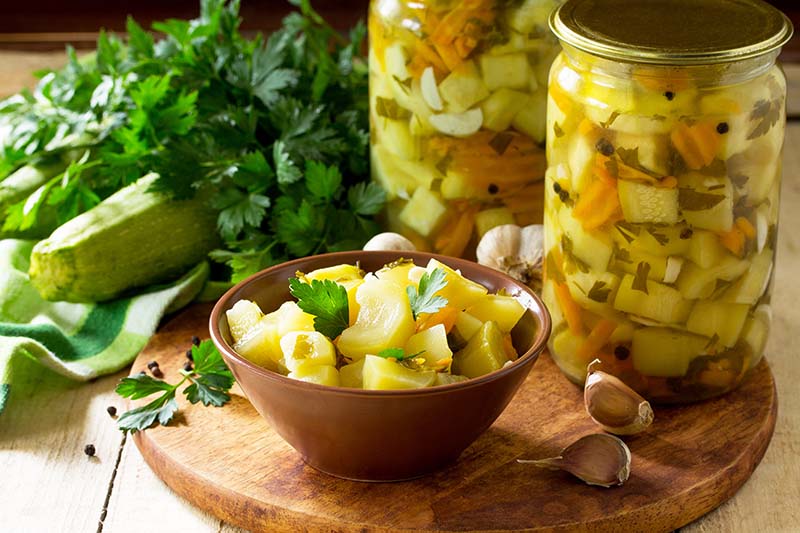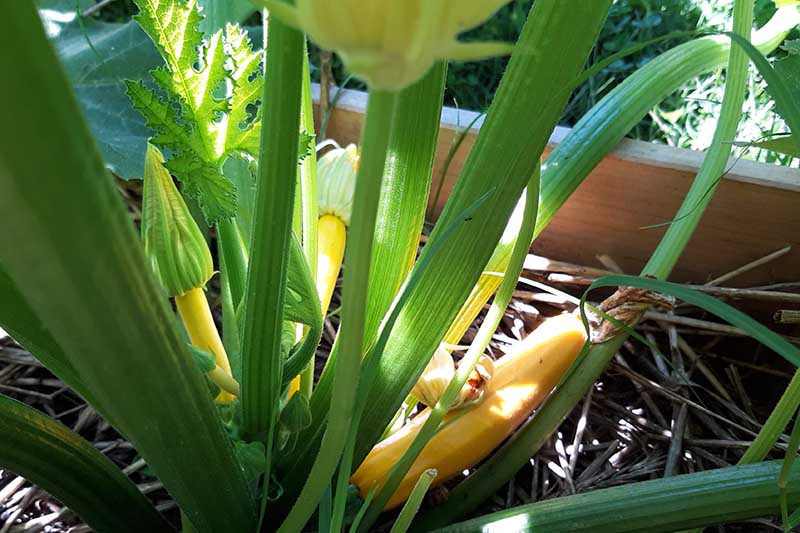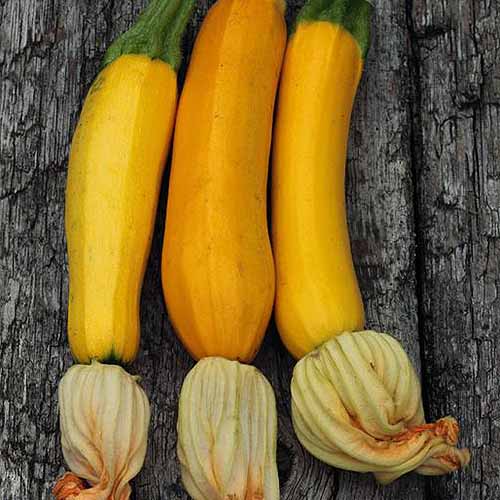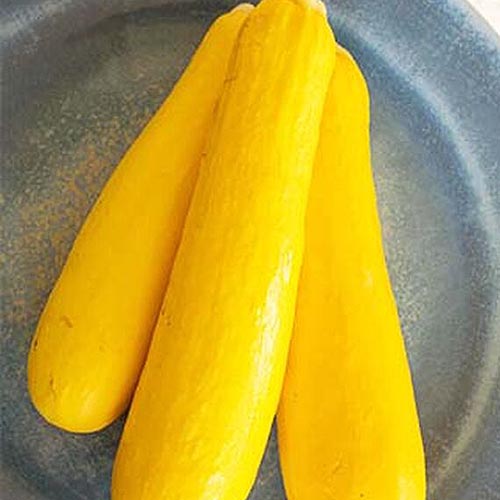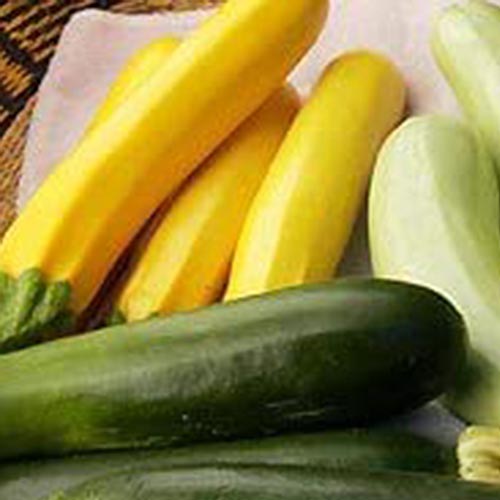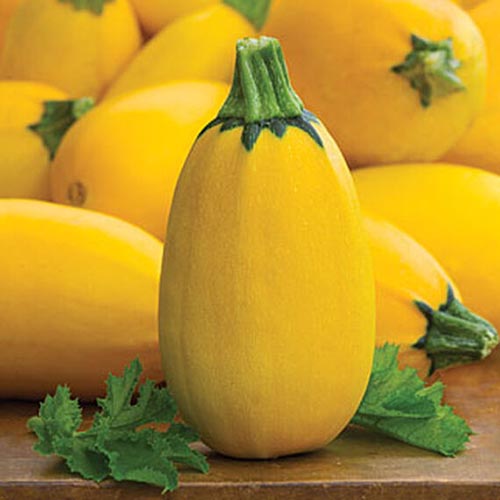I consider it the perfect starter vegetable for the newbie who wants a great return with minimal effort, and the ideal upgrade for a veteran green thumb looking to fill the freezer with tasty produce. When this veggie garden overachiever is an attractive butter yellow color, as is the case with golden zucchini, that’s just one more benefit (or as we say in the South, “one more jewel in the crown”). And while I have found it true that the golden or yellow cultivars tend to produce a little less enthusiastically than those abundant green classics like ‘Black Beauty,’ that’s not necessarily all bad. They still produce plenty. You won’t feel cheated because you’re dealing with merely gallons, not bushels, of produce from a single plant. Gold zucchini, whether heirloom or hybrid, also tend to grow fairly fast. This is nice for impatient gardeners and also those with a short growing season.
And their blooms are every bit as edible as those from the better-known glossy green varieties. Lightly battered and sauteed, they are a heavenly treat to usher in the summer harvest season. Since these prolific cucurbits will start producing harvestable fruit anywhere from 40 to 60 days after planting (from seed – transplants will be ready in even less time), you may even have time for a second planting in the late summer. Convinced that yellow zucchini might be the way to grow? If you are, let’s get started. And if you’re not, let me encourage you to give them a try with these growing tips, and short descriptions of some of the varieties that are easy to grow and too fun. Here’s what I’ll cover:
What Are Golden (or Yellow) Zucchini?
All summer squash are part of the Cucurbitaceae family, and yellow-colored zucchini are no exception.
Known as either “golden” or “yellow” zucchini, these cultivars produce fruits that are super nutritious, chock-full of vitamin A, potassium, and two grams of dietary fiber per 27-calorie one-cup serving. The plants demand heat and lots of water. They are as easy to grow and almost as productive as the wildly bountiful, more widely known green zucchini. While they are definitely squash of a different color, golden zucchini share growing requirements with more typical summer squash, and grow best in USDA Hardiness Zones 3-9. Just like their green brethren, this type of squash first emerged in Italian agriculture and cuisine. They originated in Milan sometime around 1850 as a strain distinct from other tapered-neck and winter squash like butternut or acorn. How are yellow zucchini different from typical yellow straightneck or crookneck squash? It’s all about the shape. The golden zukes are cylindrical, which makes them superior for spiralizing, I’ve found. Like those in the above photo, yellow squash have a tapered neck. Whether it’s curved or straight, it narrows. This leaves a section of flesh that’s far more difficult to spiralize, whether you’re using a simple peeler or planer, or have a separate gadget for making zoodles.
There are a few specialty varieties that have emerged more recently and don’t have that typical zucchini shape. Burpee’s exclusive ‘Golden Egg’ hybrid, for example, looks like something laid by the fairy tale goose. I’ll share more about this type in the section on cultivars below. They’re not great for zoodles, but they make up for this by being the perfect shape to stuff and grill. I’ll talk more about some novel yellow varieties here in a bit, but first I want to share three reasons why growing golden zucchini could be a great idea.
3 Reasons to Choose Yellow Zucchini
If you just like to be different, that might be reason enough to choose to grow these sunshine-hued veggies. But I’d like to offer three other pluses of growing golden zucchini:
1. They Produce Light-Colored Zoodles
Anyone on a low-carb diet or who just appreciates a light alternative to noodles has probably already found a friend in spiralized squash noodles. Yellow zukes give you the best of both worlds.
They’re easy to spiralize, like the green ones, because they’re long and cylindrical, and picked early on they have only tiny seeds in the pulp. They’re also light enough in color that they look natural with a tomato sauce, with an advantage over the other types of yellow squash with those narrow necks that are so hard to make into veggie noodles. This is particularly helpful if you’re trying to draw attention away from the noodles beneath that sauce, say, for a child who needs more veggies than she’ll eat willingly.
2. They’re a Tad Bit Sweeter Than Green Varieties
There’s not a lot of research focused on the relative sweetness of different types of summer squash, but I can vouch for the seed distributors and individual seed swappers who say yellow zucchini are a bit sweeter than green. In fact, I’ve grown ‘Golden Egg’ and ‘Golden Delight’ myself, and can attest to this! I don’t mean they’re naturally sugary like pie pumpkins or butternuts, but they definitely lend a little sweetness to stir fries and soups.
3. They’re Easy to Spot in the Garden
If you’re anything like me, this is a huge plus.
Especially here in the South, squash can grow too fast. Ignore your plants for one or two extra days and suddenly you’ve got baseball bats in place of succulent noodle bowl ingredients. Golden zucchini give you an advantage in that scenario because the leaves won’t obscure the fruit as easily. With that bright lemon color, they’re easy to spot. When you can readily spot them even without crouching, you’ll increase your odds of harvesting while the produce is still at a tasty size
How to Grow
They’re yellow, but golden zucchini grow best in the same conditions as green ones.
To begin with, you should make sure your selected garden spot has soil with their preferred pH level, which is 6.0-7.5. You’ll also want to plant them where they’ll receive at least 6 hours per day of full sun, in soil that drains readily. And they need space! Learn from my mistakes, and make sure the plants will have two feet between them for final spacing. They require ample air circulation to promote growth and prevent various ailments, including powdery mildew and stem rot. Ideally, you’ll also choose a spot with room for some companion plants that attract pollinators, which zucchini need to produce fruit, and lots of it. Marigolds are a popular companion plant, or my favorite, borage. It brings bees of all sorts to my squash garden, and they take time to pollinate the crop while they’re there. Once you’ve settled on a spot and amended the soil for these heavy feeders, directly sow a few seeds one inch deep in hills spaced six feet apart. Or, plant the seeds about 18 inches apart in rows that are two to three feet apart. Ideally, you’ll end up with one healthy plant spaced at 18-inch intervals in the rows, or two healthy plants per hill. Don’t jump the gun! The air should be warm and the weather settled, with nighttime temperatures reliably above 55°F before you plant. If you feel like you’ll run out of time, it is possible to start the seeds indoors. Just make sure to start growing them no more than a couple of weeks before you want to transplant, and use a peat pot so you won’t disturb their vulnerable roots during transplanting.
After the plants sprout in 10-14 days, growing is mostly a matter of mulching to cut down on weeds and retain water, and watering. The plants need one to two inches of water per week. Oh yes, and picking. Make every attempt to harvest the fruits while they’re still glossy, and six inches long or shorter. That’s when they’ll be tender, not pithy, whether you prefer to enjoy them raw, steamed, roasted, or sauteed. Picking often also encourages the plants to keep producing. Make sure to check out our guide to planting and growing zucchini for advice on preventing common issues and pests like powdery mildew and vine borers.
That’s also where you’ll find suggestions for preserving this abundant crop. Our sister site, Foodal, has tasty recipes too, including lots of suggestions for spiralized vegetables. Doesn’t a plateful of zucchini noodles with tomatoes and homemade pesto sound great? You can find that summer squash recipe on Foodal, along with a bounty of others.
Cultivars to Select
Choosing the best golden zucchini to grow is almost as fun as preparing and eating the harvest! When I first learned these were a thing, I was pleasantly surprised to find out the yellow varieties could be heirloom or hybrid. I do my vegetable gardening in an area that’s sweltering hot and humid in the summer, which can really stress the plants and lead to ailments like blossom end rot. We also get an influx of borers and squash bugs by midsummer most years. Both of these factors inspire me to choose the fastest-growing varieties so they’ll produce quickly, before the weather gets too stressful or the insect horde descends. If you don’t have similar limitations, you have even more options.
Golden Zucchini Seeds Many seeds you find will simply be called “Golden,” including the heirloom, organic variety available from Eden Brothers in various packet sizes. Other cultivars have specific names or specialty shapes. Here are five that might entice you:
Butterstick Hybrid
These plants produce firm, straight, yellow zucchini with a hint of nutty flavor. The single-stem habit makes it easy to pick these summer squash, and they’re known for producing over an extended period after plants reach maturity at 50 days. They’re a good choice for containers since they only spread 18 inches and grow two to three feet tall.
‘Butterstick Hybrid’ This hybrid is one of the goldens least likely to show a little dark green at the stem. And with that name, ‘Butterstick Hybrid’ will likely remind you you’d love some melted butter on your steamed squash. This cultivar is available from Burpee in 25-seed packets.
Fort Knox Hybrid
This Burpee exclusive does require five feet of room to spread, but the bushes only reach about two feet tall and will reward you with a rich supply of excellent fruit that’s still high-quality even if it’s left on the plant to grow to 10 inches long.
‘Fort Knox’ Available from Burpee in a 20-seed packet.
Golden Delight
These bright colored, sunshiney zukes with a nutty, sweet flavor are the ones I’m growing this year, and so far they’ve beat the heat here in humid Tennessee. More important for me, you can spot even the tiny buttercup-colored fruits from three paces away, so I’m picking them while they’re still small and delicious in stir fries. ‘Golden Delight’ And the plants are pretty fast, going from seed to plate in 50 days. I also reserved a few seeds from the packet to add to my fall container garden.
Golden Egg Hybrid
One of the fastest growing cultivars, with just 41 days to maturity from direct sowing, ‘Golden Egg’ is also ideal for containers. And it’s fun to look at! I grew four of these bushes this past summer, and they kept me supplied with egg-shaped golden fruits for quite a few weeks. They do spread a bit, so just one will fill up a container. Outside a container, they’ll spread about six feet.
‘Golden Egg’ I especially liked how sweet the flesh of the ‘Golden Egg’ zucchini tasted. I also used slices to make extra-wide bread and butter pickles, the perfect size for hamburger buns or tomato sandwiches. This cultivar is available from Burpee in packets of 25 seeds.
Rheinau Gold
Appealing, slightly raised ribs run the length of these fruits to distinguish this USDA Certified Organic and Demeter Certified Biodynamic variety, which was bred in Switzerland by Sativa Rheinau. It’s known for producing mightily throughout an extended season, with fruits that tend to be a bit shorter than the better-known green types.
‘Rheinau Gold’ This variety takes 50 days to mature, and the breeder urges gardeners to allow three to five feet between plants, and to grow plenty of pollinator-magnet flowers nearby. Seed packets are available from Territorial Seeds via Arbico Organics.
Go for the Golden Zucchini
Once you’ve planted these butter-colored veggies, you won’t have long to wait before you’re picking them every day. You can definitely look forward to an abundance, and enjoy them steamed, baked into bread, stuffed, grilled, or prepared as veggie noodles.
But don’t get so caught up with preserving or sharing the harvest that you forget to save seeds! With the heirloom varieties, make sure to let one or two fruits grow big enough to save seeds from. For the hybrids, you can’t count on the seeds to grow a true cultivar next year. Speaking of next year, that’s when you’ll be anxious to grow these tasty beauties again, or maybe choose another variety of summer squash or another fun type of yellow zucchini to try instead. You certainly have options. In the meantime, if you found this guide helpful, check out these zucchini growing guides that will help you to grow bountiful, healthy veggies:
How to Grow Zucchini in Containers Problems with Growing Zucchini: Troubleshooting 11 Potential Issues How to Identify and Control Zucchini Plant Pests Why Zucchini Blossoms Drop and What to Do About It
Photos by Rose Kennedy © Ask the Experts, LLC. ALL RIGHTS RESERVED. See our TOS for more details. Product photos via Arbico Organics, Burpee, Eden Brothers, and Renee’s Garden Seeds. Uncredited photos: Shutterstock.
